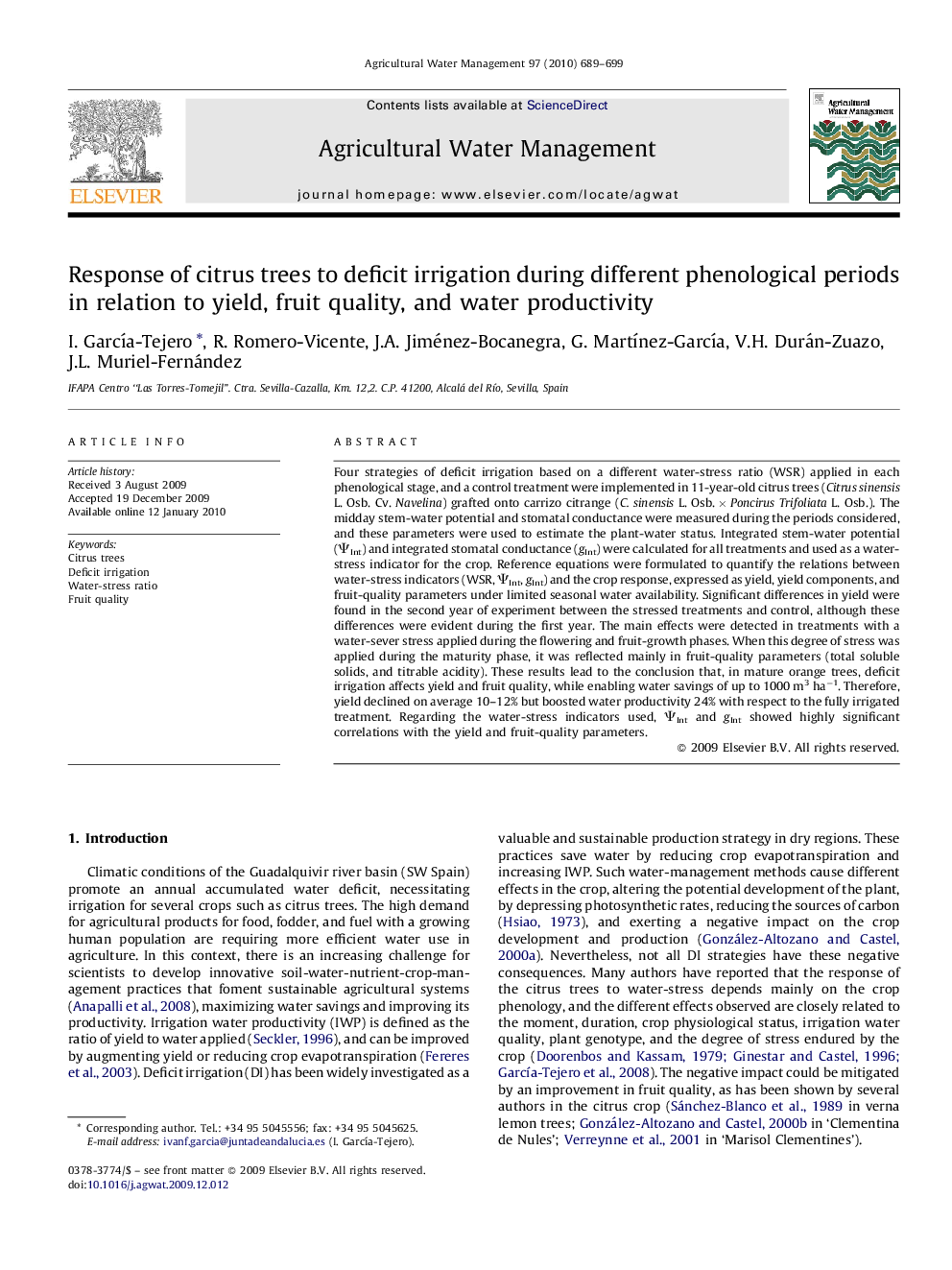| Article ID | Journal | Published Year | Pages | File Type |
|---|---|---|---|---|
| 4479838 | Agricultural Water Management | 2010 | 11 Pages |
Four strategies of deficit irrigation based on a different water-stress ratio (WSR) applied in each phenological stage, and a control treatment were implemented in 11-year-old citrus trees (Citrus sinensis L. Osb. Cv. Navelina) grafted onto carrizo citrange (C. sinensis L. Osb. × Poncirus Trifoliata L. Osb.). The midday stem-water potential and stomatal conductance were measured during the periods considered, and these parameters were used to estimate the plant-water status. Integrated stem-water potential (ΨInt) and integrated stomatal conductance (gInt) were calculated for all treatments and used as a water-stress indicator for the crop. Reference equations were formulated to quantify the relations between water-stress indicators (WSR, ΨInt, gInt) and the crop response, expressed as yield, yield components, and fruit-quality parameters under limited seasonal water availability. Significant differences in yield were found in the second year of experiment between the stressed treatments and control, although these differences were evident during the first year. The main effects were detected in treatments with a water-sever stress applied during the flowering and fruit-growth phases. When this degree of stress was applied during the maturity phase, it was reflected mainly in fruit-quality parameters (total soluble solids, and titrable acidity). These results lead to the conclusion that, in mature orange trees, deficit irrigation affects yield and fruit quality, while enabling water savings of up to 1000 m3 ha−1. Therefore, yield declined on average 10–12% but boosted water productivity 24% with respect to the fully irrigated treatment. Regarding the water-stress indicators used, ΨInt and gInt showed highly significant correlations with the yield and fruit-quality parameters.
